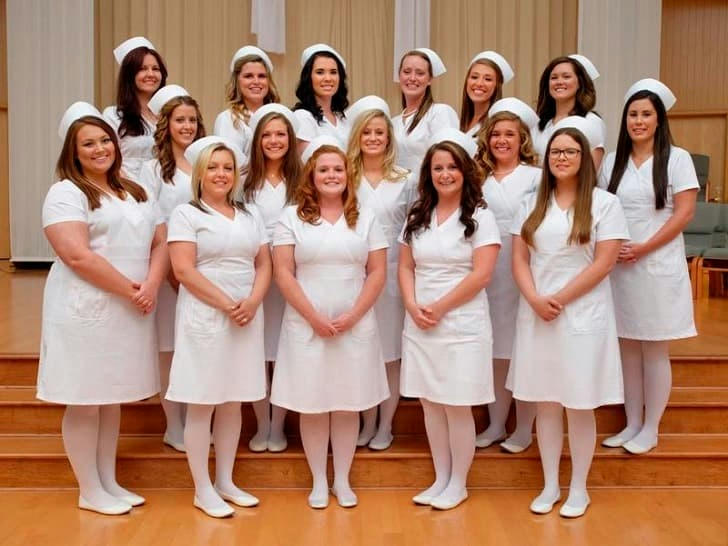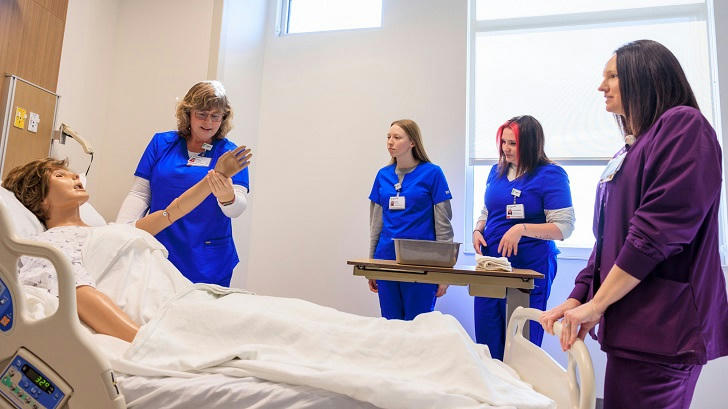CNA Training: Meeting the Healthcare Needs of the Future
As the healthcare industry evolves, Certified Nurse Assistants (CNAs) are becoming more critical than ever. They address the growing demand for compassionate, skilled caregivers, especially in a world where chronic conditions and an aging population are reshaping healthcare priorities.

Why CNAs Are in Demand

Several factors drive the increasing need for CNAs:
Aging Population: The number of elderly individuals requiring long-term care continues to rise.
Chronic Diseases: Conditions like diabetes and heart disease require ongoing management.
Expanding Healthcare Facilities: The growth of hospitals and assisted living communities creates more job opportunities.

CNAs are uniquely positioned to meet these challenges, providing both practical care and emotional support.

Here are the five new success stories of individuals who transformed their careers and increased their income through CNA training:
Case 1: From Home Caregiver to CNA in a Hospital Surgical Department
Background:
Karen, a 45-year-old home caregiver, had been providing informal caregiving services to neighbors. Her income was low, and she lacked job security. She wanted to pursue a more stable and professional career.
Turning Point:
Karen enrolled in a 12-week CNA training program, learning patient care, first aid, and infection control skills. She successfully passed the certification exam and gained hands-on experience during her internship.
Outcome:
Karen was hired at a hospital in the surgical care department. Her hourly wage increased from $10 to $22, and she received additional benefits. With continued education, Karen plans to transition to becoming a surgical technologist to further advance her career.
Case 2: From No Experience to Mental Health Care Specialist
Background:
Michael, a 30-year-old unemployed young man, had only worked temporary jobs. He was interested in the field of mental health but didn't know how to get started due to lack of experience and resources.
Turning Point:
Michael enrolled in a CNA training course with a focus on mental health care. The course emphasized communication skills and how to support patients with mental health challenges. After completing the training, he secured a job at a mental health rehabilitation center.
Outcome:
Michael started with an hourly wage of $20, but his skills quickly set him apart. He was promoted to team leader, responsible for training new employees and managing patient care plans. His annual income grew to over $45,000, and he plans to pursue further studies in mental health nursing.
Case 3: From Odd Jobs to CNA in Maternal and Infant Care
Background:
Sophia, a young mother, had to rely on temporary jobs to support her family. She was interested in maternal and infant health and wanted to find a career in this field.
Turning Point:
Sophia enrolled in a CNA training program that specialized in maternal and infant care, where she learned about newborn care, breastfeeding support, and postnatal care. After completing the course, she was hired by a local maternity hospital.
Outcome:
Sophia's starting hourly wage was $24, with flexible working hours that allowed her to balance work and family life. Her passion for maternal and infant care earned her trust from patients and colleagues, and she plans to pursue a midwifery program to further her career.
Case 4: From Store Cashier to CNA in High-End Senior Care
Background:
David worked as a cashier at a convenience store, a job that was monotonous and low-paying. He wanted a more meaningful career with better financial prospects.
Turning Point:
David enrolled in a CNA program with a focus on senior care, where he learned how to provide personalized care, including emotional support and activity planning for elderly patients. After completing the course, he was hired by an upscale senior living community, providing care for elderly patients from wealthy families.
Outcome:
David's hourly wage increased to $26, and he received additional benefits. He enjoyed a comfortable working environment and positive client relationships. He plans to pursue further training to become a care supervisor, opening up more career opportunities.
Case 5: From Hotel Server to CNA in Hospice Care
Background:
Emily a 25-year-old hotel server, had extensive experience in customer service but found the work unfulfilling. After witnessing a family member's experience with hospice care, she was inspired to shift toward a healthcare career.
Turning Point:
Emily enrolled in a CNA course with a special focus on hospice care, learning how to provide physical and emotional support to both patients and their families during end-of-life care. After completing the program, she secured a position at a hospice care facility.
Outcome:
Emily's hourly wage started at $20, and she found deep personal satisfaction in her work. Her compassionate approach earned her respect from patients and colleagues. She plans to pursue additional training to become a hospice nurse, providing high-quality care to more patients in need.
Summary:
These cases once again highlight the vast potential of CNA training, demonstrating how individuals, regardless of their starting point, can find success. Not only did these individuals experience significant income growth, but their work also became more meaningful and fulfilling. These stories showcase the diverse career paths and positive impact that a CNA certification can have on one's life!
Preparing for the Role
CNA training programs ensure that students are ready to face the demands of caregiving. Courses cover topics such as patient safety, hygiene, and anatomy. Practical training allows students to apply their knowledge in real-world settings, building confidence and competence.
